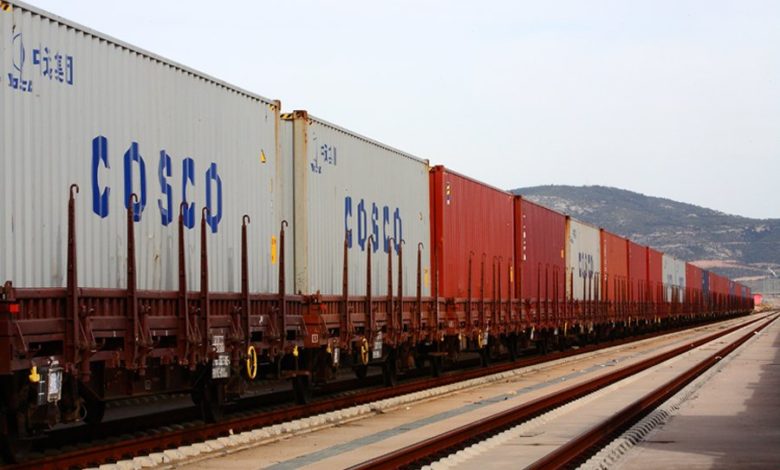The China – EU rail network and the US election

It may well be asked what the two things in the headline above have in common. Simply put, they both are shrouded in claims of deception, fraud and fake news. This article will refrain from engaging in the current flavour of the day in dissecting the claims and counter claims emanating out of the US election. However, the current spat between the Biden and Trump camps regarding fraud and manipulation turned my attention as to how various parties along the BRI China-EU rail have developed similar narratives to point to the success or not , of the China – EU rail network. This article tries to unpack some of these so as to give greater clarity to those involved in supply chain and logistics management in the Eurasian zone.
But first we need context. The intent of China’s Belt and Road Initiative is to create an integrated and connected global trade network. This was to be achieved by developing key infrastructure that enabled the integrated pairing of seaports with rail networks. In the case of Europe, it was to integrate into the Ten-T rail network that would allow better management of last / first mile freight delivery considerations. The new freight network was to complement maritime activity by activating short-sea freight routes. Furthermore, a single platform using the rail and shortsea routes has been created to facilitate this.
There are only about 10 European cities that receive regular freight rail services from China
To bring this to fruition, the China – Europe express sought to build up inland hubs with the expectation of these inland ports to function in the same manner as seaports. This was the “win-win” narrative that built on the development of export and import markets that would create greater regional employment and growth through increased import / export tax revenue. However, this correlation was difficult to measure in simple economic terms, and so was born the fascination of rail freight operations as a measure of success.
Unfortunately, using this freight train as a measure has obscured what is really happening along the China-EU rail freight network. As there is no direct correlation between import / export associated rail leading to increased investment and growth, these inland hubs had to look at other regions for growth. With this comes the issue of state subsidies to attract freight trains and the concomitant level of corruption to get freight train numbers up to meet their performance measures.
Typical of this distortion is encapsulated in the recent announcement of a new direct China-Europe rail link between Hefei and Dourges in France. This added to the narrative that China – Europe rail was successful because it had integrated and effective connectivity with 64 European cities. Furthermore, impressive train and cargo volume figures are trotted out to support this claim. For example, data shows an increase of 44% in rail freight along the China-Europe routes, with some 7,600 trains using this network in the first eight months of this year. Equally impressive are the 3,094 trains passing through the Alataw Pass in the Xinjiang Uygur Autonomous Zone – this being a 41% increase in train traffic. August alone saw 1,247 trains transport 113,000 teu, up an impressive 66% year-on-year.
There are many official reasons given for this dramatic increase in volume. Improved digital custom clearance in places such as Alataw Pass has reduced transit times. Officials are also very quick to point out that there are now 200 categories of export / import cargo. These range from motor vehicles, auto spare parts, wine, and e-commerce parcels.
However, all this positive energy hides real issues that those in logistics should be aware of, particularly when planning and arranging supply chains along the China-Europe rail network. These are structural issues that go beyond the simple discounting of the volume increase associated with Medical Supplies and support for Covid-19.
Whilst some weight must be apportioned to the effects of quarantine on ocean freight capability and capacity, these can be easily identified.
However, this presents a superficial understanding of structural issues in play that may well impact the successful delivery of rail to port pairings and the role of short sea routes.
The most important structural issue that has arisen with this obsession with train numbers to meet state performance standards is the distortion of city connectivity status. Creating this distortion has been the increase in the number of what are called customised irregular train services. Whilst they are reported as freight connections, and in some cases announced as a new connection such as the Hefei – Dourges connection claims, these are not on regular schedules or routings. They are often a single train journey between China and a European city, although declared a new line, there are no follow up freight train services. Besides them being effectively unreliable, they essentially service a single client. Some 30% of all rail freight fell into this category in 2019 and is said to be to close to 40% this year.
When stripping all this white noise out of the narrative, what emerges is that there are only about 10 European cities that receive regular freight rail services. These are: Warsaw, Lodz, Praha, Rotterdam, Hamburg, Duisburg, Neuss, Nurnberg, Tilburg and Liege. The other cities range from a one off only service to irregular customised train services for a single client communication.
It is a case of buyer beware. Do your due diligence before planning your logistics and supply chain capability along the BRI and China. Just as the current situation with the US election results – the truth is somewhere in the middle.
